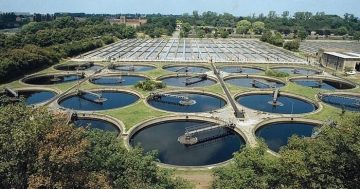For those of a more philosophical bent progress is a slippery thing to measure.
Maybe the salary is higher but the kids are in bed by the time one gets home? Is that progress?
What if we could guarantee a season of plenty for all at the cost of one blood sacrifice? On average progress no?
But for the ACT Government 28 key performance indicators are all that’s required.
Mr Stanhope has announced that Canberra as a whole is streaking ahead:
Canberrans are more water-wise, less wasteful and more satisfied with the quality of the ACT’s public schools and services at The Canberra Hospital, according the ACT’s Government latest report card on life in Canberra.
The Measuring Our Progress report, which now has a dedicated website, was released today by the Chief Minister, Jon Stanhope.
“Measuring Our Progress provides a snap-shot of life in Canberra against 28 indicators in areas including health, safety, sustainability, and education,” Mr Stanhope said. “It aims to provide a complete picture of our progress, as a community and as a Government, towards a healthy, safer and more prosperous city.”
The website is online and the 28 indicators which will now skew every aspect of governance are:
- A Healthy ACT
— Birthweight in newborns
A measure of the proportion of babies born in the ACT (to ACT mothers) with a birth weight of less than 2,500 grams.
— Tobacco consumption
A measure of the proportion of persons in the ACT that currently smoke on a daily basis.
— Life expectancy
A measure of life expectancy at birth (in years) for males and females in the ACT.
— People with a healthy bodyweight
A measure of the proportion of persons in the ACT with an overweight or obese self-reported Body Mass Index.
A Prosperous ACT
— State Final Demand
A measure of seasonally adjusted, quarterly State Final Demand (chain volume measure) per capita in the ACT.
— Unemployment
A measure of the trend, monthly unemployment rate in the ACT.
— Capital expenditure
A measure of the level of trend, quarterly, total private new capital expenditure per capita in the ACT.
— Equitable distribution of income
A measure of the ACT’s Gini Co-efficient.
A Fair and Safe ACT
— Offences against the person/property
A measure of the number of offences against the person and property recorded in the ACT.
— People who feel safe at home
A measure of the proportion of persons in the ACT who feel safe at home during the day and at night.
— Child protection substantiations
A measure of the rate, per 1,000 children in the ACT aged 0-16 years, of child protection reports that, upon appraisal, are substantiated.
— Homelessness
A measure of the rate of homelessness in the ACT per 10,000 of the population.
A Sustainable ACT
— Water consumption
A measure of the average annual residential water consumption in the ACT (kL/property).
— Greenhouse gas emissions
A measure of the total tonnes of greenhouse gas emissions (CO2-e) per capita in the ACT.
— Waste to landfill
A measure of the average per capita tonnes of waste to landfill in the ACT.
— Ecological footprint
A measure of the average per capita ecological footprint in the ACT (global hectares).
An ACT with High Quality Services
— Satisfaction with service delivery
A measure of the proportion of persons indicating they were satisfied with the delivery of ACT Government services.
— Call centre response times
A measure of the proportion of calls to the ACT Government call centre answered in less than 20 seconds.
— Satisfaction with education
A measure of the proportion of parents satisfied with their child’s education in ACT public schools.
— Satisfaction with hospitals
A measure of the proportion of patients satisfied with their hospital stay at The Canberra Hospital.
A Vibrant ACT
— Contact outside the household
A measure of the proportion of persons in the ACT having regular face-to-face contact with family/friends outside the household.
— Involvement in cultural events
A measure of the proportion of persons who attended at least one culural venue or event in the preceding year.
— Participation in sports/physical recreation
A measure of the participation rate in sports and physical recreation in the ACT for persons aged 15 years and over.
— Participation in voluntary work
A measure of the proportion of persons in the ACT that have undertaken voluntary work in the last 12 months.
An Educated and Skilled ACT
— Children achieving national standards in education
A measure of the proportion of Year 3, 5, 7 and 9 students in ACT schools achieving at or above the national minimum standards for reading, writing and numeracy.
— Year 12 (or equivalent) attainment
A measure of the proportion of 20-24 year old people in the ACT who have attained a Year 12 Certificate or equivalent (AQF Cert II).
— People with post-school qualifications
A measure of the proportion of persons in the ACT, aged 25-64 years, with post-school qualifications.
— VET participation
A measure of the proportion of persons in the ACT, aged 15-64 years, participating in vocational education and training.




















